Connie Sobczak's Blog
April 11, 2023
Afghan Girls in Rwanda Receive a Be Body Positive Workshop
posted by Elizabeth Scott / April 28, 2023
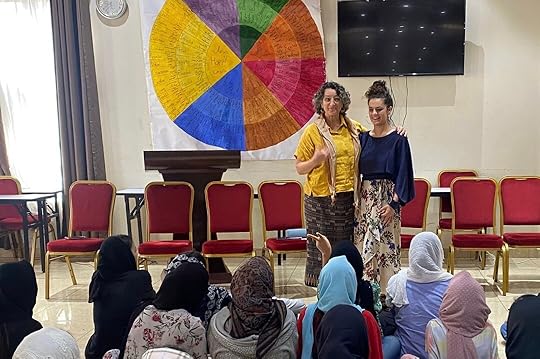
School of Leadership Afghanistan (SOLA) Begins Again in Rwanda
Remember the images of the airport in Kabul as thousands of desperate people attempted to leave Afghanistan as the Taliban marched into the city following the American withdrawal? In the summer of 2021, that was just where 250 students, teachers, and staff from the girls School of Leadership Afghanistan (SOLA) found themselves as they attempted to escape a country where educating girls was about to, yet again, be made illegal. Their brave founder, Shabana Basij-Rasikh was already inside the airport, and she was implementing a carefully designed plan to guide each member of her school’s community to a cargo plane that would take them to safety.
You can imagine the intensity of the experience for each girl as she prepared to find her way to the airport. The wrenching goodbyes to her family as she left with only a few possessions in her hands to join a teacher or a staff member winding their way through chaos to the airport. The traumatic scenes at the entrance to the airport as each girl and each staff member attempted to connect with Ms. Basij-Rasikh, who had organized all of their paperwork and fought through the melee to pull them to safety. Then, hours later, lifting off the ground to fly to their new home in central Africa. Just five days later classes resumed in their new school location in Rwanda. Not a single student or staff member was left behind.
The Body Positive at SOLA
This is the brave community that invited The Body Positive to volunteer to conduct a workshop for the girls and staff last month. The Dean of Faculty at SOLA remembered The Body Positive teaching a workshop at a school in California years ago. She felt that The Body Positive’s focus on positive embodiment could be a useful resource to support the SOLA girls in adjusting to their lives in Rwanda as they brave the painful separation from their families and their country.
I immediately volunteered to lead the two-day training for 60 students. My 23-year-old daughter Uma came as my co-facilitator. (She led her first training as a Body Positive Facilitator when she was twelve.) We spent a good deal of the 25 hours in the air to equatorial Africa planning our training and adapting our teaching methods to embrace the diverse ages (12-20), and the cultural world view of the students as well as the limited English of some of the younger students.

I would so love to share the beautiful faces of the students at SOLA, but we cannot post their images on the internet without risking exposure for their families at home. It is now illegal in Afghanistan to educate girls and women after primary school.
Meeting the Girls and Women of SOLA
After arriving in the beautiful, green and very alive country of Rwanda, we found our way to SOLA, a beautiful campus with a view of the green hills all around. What a joy it was to meet the students! They surrounded us everywhere we walked on campus, first shyly introducing themselves in formal English, and soon after, hugging us and laughing. These young women of SOLA will truly be the next leaders of Afghanistan. They are an extraordinary group of brave, positive, and soulful girls and women. We were deeply honored to be invited to teach alongside the caring, brilliant, and committed staff who create a loving and academically challenging learning community at SOLA, and who embrace the girls as if they are their own children.
The Student’s Response to the Be Body Positive Model
The students engaged energetically in learning the Be Body Positive Model’s five Competencies and applying them to the work they are doing to care for themselves and each other. They are working hard to build a close community to support each other during the separation from their families, who they haven’t seen in 16 months. Their feelings of pain and loss were palpable. Together, they are developing themselves through their education and all of the creative healing methods SOLA offers, to shoulder the daunting responsibility of helping to transform their country of Afghanistan
The students’ responses to The Body Positive’sDeclare Your Own Authentic Beauty activity
My Beauty is…
My beauty is how I take care of myself’
My beauty is me crying
My beauty is my nose
My beauty is reading the Quran
My beauty is my face
My beauty is the tallness from my ancestors
My beauty is us singing
My beauty is my lips
My beauty is my dimples from my dad.
My beauty is my grandmother’s eyes, she took care of me
My beauty is my whole body
My beauty is dancing
My beauty is wearing my hijab
My beauty is my sadness.
My beauty is my hair
My beauty is painting and drawing
My beauty is my legs
My beauty comes from my dad and grandmother
My beauty is my intelligence, from all my ancestors, they were all smart and strong
My beauty is feeling comfortable in my body
My beauty is my patience
My beauty is me
Teaching is Improv Theatre!
The teaching staff at SOLA joined in the workshop and consulted with us at breaks to help us adapt to what was emerging in the group as we progressed. We focused on asking questions and exploring the girls’ own body stories. We simplified a lot of the Be Body Positive lessons to make them even more trauma informed and culturally relevant. And we adapted every step of the way to the students’ responses, making the activities more active and playful to engage them, even with language concerns.
Trauma and Embodiment
There was so much to learn, and it was deeply moving to hear from the students about how they experienced their own bodies after all they have been through. Some students reported that they cope by allowing no feeling at all in their bodies, and others expressed the pain and grief they feel in their hearts, knowing what their families are going through at home. It was an honor to witness the care and protection they shared with each other, hugging and cuddling the younger girls and stopping us to help their teacher translate what we were saying to the 16 students who had arrived just two weeks before from a refugee camp and had limited English.
What We Learned Together
The songs we sang together, and the tears, laughter, and joy the girls shared with each other as they embraced self-love and the beauty of their own ancestors, is something I will never forget. In the final circle, each girl shared what had been the most important thing she learned. Some students shared how the Practice Intuitive Self-Care Competency gave them permission to eat and care for their bodies in a new, more responsive way. Some said they were proud to declare the beauty of their ancestors. But the majority said it was self-love that most inspired them… the feedback about our Cultivate Self-Love Competency just broke my heart open.
The girls earnestly thanked us for teaching them something so important. It was profound to hear them share their realization that they can allow themselves to have love and joy and food and self-care while at the same time staying present to their own pain and the needs of their parents and siblings at home. I whispered to Uma as we went around the circle, “Okay, I am committed to doing The Body Positive’s work for at least another ten years after hearing what it brought to these girls.”
Tree of Transformation Activity
The last activity we conducted was to work in small groups to identify what qualities would support a blooming of positive embodiment and self-love at SOLA. It was wonderful to listen to their ideas about what qualities build strong communities and to hear their commitment to building a Body Positive Community together.
Singing with SOLA https://thebodypositive.org/wp-content/uploads/2023/04/SOLA-Singing.m4aThis recording is of Uma teaching the SOLA girls an American song. Later that evening the girls shared their traditional songs with us as they celebrated their Afghan New Year, while the teachers stirred a huge pot of New Year’s stew on an open fire.
Rwanda: Transforming Violence into Cooperation
We discovered all of this beauty and bravery in the bosom of Rwanda; a nation that welcomed SOLA without hesitation. A nation that has transformed itself since the genocide 29 years ago into one of the most cooperative, beautiful, and non-violent places in the world. A people that are profoundly hopeful and creative in healing great loss and division. Rwanda is a place where people make every effort to take care of one another and the whole community. If asked, “Are you Tutsi or Hutu?” they will respond with great earnestness, “We are Rwandan!” They are committed to ending the divisions that colonialism fostered, and that led to a genocide in which a million people were murdered in just 100 days, in this nation the size of Vermont. The Rwandans have turned around hundreds of years of othering, using traditional restorative justice models similar to the South African “Truth and Reconciliation” process. The Peace Curriculum of the National Genocide Memorial is in every school in the country. They have made tremendous gains in building unity and cooperation, creating an example of what all of us can work towards. Every part of this powerful and transformative trip gave me hope for the human race.
I would love to share stories with you about our travels to Akagera National Park in Rwanda and the beautiful art from the women’s collective there… some other time.
Warmly,
Elizabeth
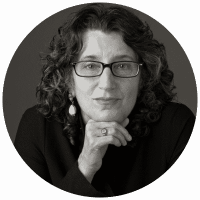 Elizabeth Scott
Elizabeth ScottElizabeth Scott LCSW, CEDS-S, is Co-Founder and Director of Training for The Body Positive. She has been practicing psychotherapy for more than two decades in Marin County, CA. She studies Vipassana Meditation, a practical, embodied approach to awakening, which she finds to be an inexhaustible resource for finding joy and purpose in life.
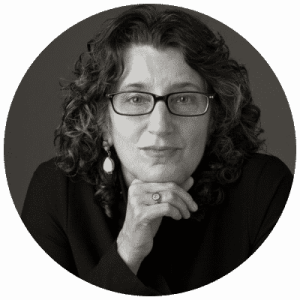 Elizabeth Scott
Elizabeth ScottElizabeth Scott LCSW, CEDS-S, is Co-Founder and Director of Training for The Body Positive. She has been practicing psychotherapy for more than two decades in Marin County, CA. She studies Vipassana Meditation, a practical, embodied approach to awakening, which she finds to be an inexhaustible resource for finding joy and purpose in life.
Blog HomeThe post Afghan Girls in Rwanda Receive a Be Body Positive Workshop appeared first on The Body Positive.
April 10, 2023
Mud & Magnolia: Declaring Your Authentic Beauty This Spring
Mud & Magnolia: Declaring Your Authentic Beauty This Spring
posted by Martha Krausz / April 10, 2023

On the night of the vernal equinox (here in the northern hemisphere), I participated in a meditation with spiritual guide and yoga teacher, Clara Roberts Oss. Some of our Zoom rooms showed dimly lit squares, bedrooms flickering with easy flames; others burned a bright blue-white of an overhead kitchen light. Some boxes were motionless with only the silhouette of a cross legged form, others a flash of a body still fixing, situating, arriving. Together we were a quilt of dark and light, of movement and stillness–a whole.
With closed eyes, Clara described Lakshmi, the Hindu goddess of beauty and power. She painted for us a woman resplendent in gold bangles, colorful textiles and jewels—a woman adorned and decorated with vibrant external beauty. This image gave way to the image of the garden in which she sat, and inspired our own visualizations: what new beauty (in the most expanded sense of the word, and in all aspects of our lives) do we want to cultivate this season? What new seeds do we want to plant? What does our garden look like? What needs nourishment? What’s growing now but might need to be attended to?
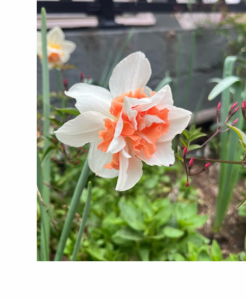 In spring, especially, a Lakshmi-like blooming and visible abundance surrounds. It is the sort of beauty we have all been conditioned to see and celebrate. The trees, bejeweled in pink and white; the robins’ copper breast kissing the morning grass. Where I live, wildflowers are beginning to spill over hillsides like fallen beads. Crickets click and pop, the air against their wings like an atmospheric bubble wrap cracking open the gift of spring. Just yesterday, a daffodil’s peach-coral-pink ruffle made me say if I were a flower I’d want to be that. A befuddling and beguiling beauty, spring wears. She can leave us feeling awestruck and deferent, as if kneeling at her goddess feet.
In spring, especially, a Lakshmi-like blooming and visible abundance surrounds. It is the sort of beauty we have all been conditioned to see and celebrate. The trees, bejeweled in pink and white; the robins’ copper breast kissing the morning grass. Where I live, wildflowers are beginning to spill over hillsides like fallen beads. Crickets click and pop, the air against their wings like an atmospheric bubble wrap cracking open the gift of spring. Just yesterday, a daffodil’s peach-coral-pink ruffle made me say if I were a flower I’d want to be that. A befuddling and beguiling beauty, spring wears. She can leave us feeling awestruck and deferent, as if kneeling at her goddess feet.
Like the magnolia showing its pink and white, spring can be a time for us to bloom too; a time when we let our bodies and bodies of work unfurl, and step into the light. During a lunch break, I unpeel the long sleeve and expose my beauty-marked shoulders; I unroll my yoga mat onto the patio and let the abalone luster of lines stretching across my hips and thighs shine. In spring, we are sometimes tempted to reveal what was clothed or concealed; we might hold out the bouquet of our visible, physical beauty in the spring’s new light.
It’s also a period when our bodies of work—the limbs of new ideas, projects, stories, and dreams start to bud and break through the soil, untangle from the roots of our fear and reach towards the sunlight of being witnessed in community. Students present final projects. Lovers confess their love and hold hands. Writers ready the first chapters of their novel, or submit an essay to a contest. Whether you are an artist, entrepreneur, at-home parent, carpenter, leader, student (insert your craft/ profession here), I wonder if now is also when your nonphysical beauty begins to wave its hands, daring to join a larger garden.
But spring’s beauty—and the beauty of our beings—is not all daffodils and daisies. Authentic, whole-person beauty is not just full of our flowery presentations and final drafts. If you haven’t noticed, spring is also damn messy. Damn muddy, to be specific.The Body Positive continually helps remind me that, to witness the whole beauty of ourselves and our worlds, we must also include its muddier side. E. E. Cummings begins his springtime poem, “[In-Just-],” “In Just-/ Spring when the world is mud-luscious . . . . / when the world is puddle-wonderful.”
Spring is a season of slime, slip, and smear; of making a mess in mud, playing in puddles, leaving tracks and dirtying up the place. In my yard the hair-whipping, blossom-twirling winds blow solid pink through my yard; by the time they pass, across the slate a carpet of slick magnolia petals lies, a wobbly welcome mat on which a morning heel slips, then catches itself—thank goodness—on its way out the door. And there’s my dog, the shortbread of his body dipped chocolate dark in the pudding of a cold morning mud where we walk. After our walk, I wrangle each of Alfredo’s paws only halfway into a scented wet-wipe; inside, our muddy footprints track across old towels that barely cover the carpets.
Some of the spring mud I cannot, and do not wish to, wipe away. There is still the mud of my mind, my creative life, the spring of my being: a fertile, nutrient-rich sediment and space of play, ideation, experimentation, creation. All seasons signal a shift, but perhaps spring is thickest with the wonderful mess and primordial goo of new intentions, the seeds of new projects, new movement of making new things. This mud is dark. It can be scary. It can feel dangerous. My mud is made of the many essay drafts sitting in open tabs on my laptop like standing puddles ( a thin algae has begun to grow over some) and the ones that rush towards the ocean of publication like rivers, wild and wanting; it contains the seeds of the writing workshops that I’m not ready to pitch to my community; my mud is the flesh of my thighs where hamstring meets butt, always changing in shape and size, in strength and softness, as I live the life of both writer and mover (body, and body of words).
Mud, metaphorically speaking, is the space of mystery. Of the unknown and often uncontrollable. It is the space of being, of daring to create a life and shape guided by your own felt sense, rather than by the societal trellises and espaliers that direct us.This dynamic mud of our lives and our bodies can overwhelm the critic or controller in us: awaken in her the terror of swimming inside the still inchoate, the I-don’t-quite-know-yet-what-I’m-doing waters of being, becoming, wondering. But it’s also the source of what roots us to ourselves, connects us to each other, and welcomes us to stand in our full, authentic beauty.
In his lecture “The Coincidence of Opposites,”Alan Watts reminds us of the inextricability of opposites; how the binaries that organize concepts (flower and mud, pretty and ugly, clean and dirty, light and dark, sound and silence, good and bad, life and death, being and non-being, front and back) collapse under honest examination. He notes that each side of an opposite is certainly different, but insists that these diverse sides of our reality are at the same time one. He reflects, “One has to fundamentally get used to the notion that different things can be inseparable; that what is explicitly two can at the same time be implicitly one.” There is no front without back, light without dark, sound without silence. The mud and flowers of our lives are different, but they are also interdependent; they cannot exist without the other.
Take the lotus flower. In the wild, the lotus pushes its way through the darkness of heavy mud, rising toward the sun’s light. When the lotus emerges, its first petals open. The lotus has been metaphorically crowned as the beautiful survivor. The mud through which it rises has come to represent obstacle, hardship, and suffering. But why is it that mud is saturated with only negative narratives? Yes, mud can overwhelm and bury. But isn’t mud also the stuff of play? Of face paint, and slipping and sliding, of castles and mud cakes; the place of birth, regeneration and growth? The other night, my partner said, “Name one thing that doesn’t come from dirt . . .you can’t!” True, the lotus pushes through and against mud, despite mud. But the simultaneous truth is, it also came from mud. Mud is the medium and foundation of everything. Flaura, fauna, and landscapes everywhere depend on mud, rich with nutrients, minerals, and microorganisms, to survive.
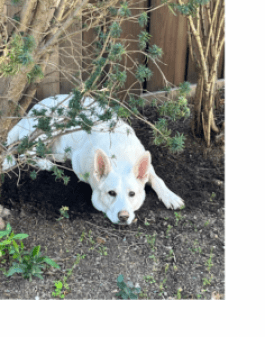 The lotus blooms not despite the mud but because of mud. The mud and the lotus are different, yes. But they are not separate; and one is neither more important nor more beautiful than the other.
The lotus blooms not despite the mud but because of mud. The mud and the lotus are different, yes. But they are not separate; and one is neither more important nor more beautiful than the other.
When the lotus blooms, must we discard or compartmentalize all thoughts of the mud in which it was birthed? Authentic beauty has no chronology, no hierarchy, no end goal. It is all a blossoming.
Why am I making such a fervent case for mud? Our capacity to embrace and see the beauty and necessity of mud, I think, circumscribes our capacity to celebrate and appreciate our whole authentic beauty. We too run the risk of interpreting beauty like many interpret the lotus flower: of ignoring and undervaluing the mud in us and around us; of idolizing only the flowery parts, staying fenced inside narrow and stifling beauty standards. When we operate inside these narrow beauty ideals, so much of the soil of us is systemically, poetically, and politically shoveled away, wiped “clean”; ignored, denied.
The stakes of forgetting our mud are high. To bifurcate the flowery parts of us from the mud of our being is to fall into the game of fear, control, and division. In Watts’ words, “If we forget that black and white are inseparable, and that existence is constituted by both being and nonbeing, we get scared.” When we get scared of differences/opposites, we pit one side against the other. When we find ourselves in fear, in need of protecting against what and who we think is separate from us, we take up arms against the parts of our world that we need most to embrace. Mud, in our minds, is suddenly the enemy of flowers, fat the enemy of skinny. In other words, when we make an enemy of one side, we cling desperately to the other. Suddenly skinny must win against fat. Curated and controlled bodies must war against the larger, softer bodies. This can lead to small and large crimes: we glare at the girl in the bakery who has a more “put together” outfit than us; entire populations oppress and enact violence against other people, genders, body types.
To think in flower or mud is to live in fear and in denial of our wholeness. To think in flower and mud is to connect, to love, to surrender to the sweet mess of being human among humans, as one.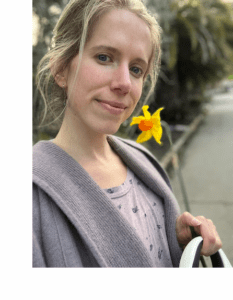 I am living an extended mud season. My thirtieth year of writing, leading, creating, is fecund but largely formless, magical but messy, unstoppable yet uncharted. Life right now is as muddy as some sections of the Bay Area trails. The morning after Clara’s meditation, I went on a walk in Kentfield with my dog and his bff. Around the camber of a curve, a small puddle became a lagoon. There was no highland onto which I could edge my boot, no sandbar to separate me from the mire of mud. I stopped my walking and watched Alfredo & his best buddy, Teddy, prance across the murky waters painting their sides an appaloosa splatter. How do they not care? I first thought. Then I remembered how, as a child, I did not care either, that I only learned to care at some point, and had been pretending to care. For whom? I am still not entirely sure. A relief set me back into motion and I walked through, imagining myself part of the herd—a horse, carrying something precious through the mud to the other side. I feel an unburdening as I cease to look for a way out; as I release the work of scanning for a way to stay dry, clean, muddless.
I am living an extended mud season. My thirtieth year of writing, leading, creating, is fecund but largely formless, magical but messy, unstoppable yet uncharted. Life right now is as muddy as some sections of the Bay Area trails. The morning after Clara’s meditation, I went on a walk in Kentfield with my dog and his bff. Around the camber of a curve, a small puddle became a lagoon. There was no highland onto which I could edge my boot, no sandbar to separate me from the mire of mud. I stopped my walking and watched Alfredo & his best buddy, Teddy, prance across the murky waters painting their sides an appaloosa splatter. How do they not care? I first thought. Then I remembered how, as a child, I did not care either, that I only learned to care at some point, and had been pretending to care. For whom? I am still not entirely sure. A relief set me back into motion and I walked through, imagining myself part of the herd—a horse, carrying something precious through the mud to the other side. I feel an unburdening as I cease to look for a way out; as I release the work of scanning for a way to stay dry, clean, muddless.
I smiled at the hiker facing me, coming in my direction. I saw her also pause, and consider what I had. The joy of knowing that mess, that mud, was the only way.
RESOURCES
Prompts (to write or reflect on):
What is your spring mud? What does your spring mud consist of? What is still inchoate, messy, and in-process—perhaps dark, mysterious, and a little risky? In your creative life? In your work and social life? In your body? In the body of work you are creating? How might this be a fertile ground this year, full of nutrients? What are the flowers in your life? What is already blooming or beginning to bud in your community, in your space, in your body? What in your life is the magnolia you snap a photo of and send to a family member/friend? The daffodil you pick and hand someone, the bouquet you’ve brought to the table of your work life, social life, etc.? Make the connection. How are these two parts of your life, perhaps opposites in some way, connected to each other, inextricable from the other?Listen, Move, Learn
E.e. Cummings’ poem, “[In-Just-]“To Be Made Whole”—A conversation brought to you by the On Being Project with poet Ada Limón & host, Krista Tippett.“Magic, Everyday Mystery, And Getting Creative”—Another On Being conversation with guest Rick Rubin & host, Krista Tippett.Practice With Clara—“Clara Roberts-Oss Yoga believes that much of the spiritual practice is about ‘lila,’ cosmic play. When we play, we open ourselves to the unfolding while in the process. Her yoga is “ less about the goal and more about the evolution.” PWC offers a space to advance your yoga practice with a wide range of class styles to accommodate yogis of all levels.Alan Watts Lecture “The Coincidence of Opposites” Blog HomeThe post Mud & Magnolia: Declaring Your Authentic Beauty This Spring appeared first on The Body Positive.
February 14, 2023
Will You Be Your Valentine? Gifts for Cultivating Self-Love
posted by Martha Krausz/ February 14, 2023

 When I was in college studying Virginia Woolf among the Jersey-cowed fields of rural Massachusetts, my mother would send me boxes of See’s Candy. In February, the black and white checkers would brighten into red cushioned hearts, holding an assortment of dark and milk nuts, truffles, and chews. Reaching into the mailbox to upright the slanted heart, I would hear the crimped paper cups slide back into place. From Mama Bear, to my Mouse the card read. Each year, I would take my Valentine treasure to the library to share its contents with my friends. First, though, I would claim the dark chocolate almond clusters for myself—my personal favorite. I love how they look like a single piece, but are really an amalgam, made of many parts, each almond held together by the sweet, encapsulating brown of cocoa, cream.
When I was in college studying Virginia Woolf among the Jersey-cowed fields of rural Massachusetts, my mother would send me boxes of See’s Candy. In February, the black and white checkers would brighten into red cushioned hearts, holding an assortment of dark and milk nuts, truffles, and chews. Reaching into the mailbox to upright the slanted heart, I would hear the crimped paper cups slide back into place. From Mama Bear, to my Mouse the card read. Each year, I would take my Valentine treasure to the library to share its contents with my friends. First, though, I would claim the dark chocolate almond clusters for myself—my personal favorite. I love how they look like a single piece, but are really an amalgam, made of many parts, each almond held together by the sweet, encapsulating brown of cocoa, cream.
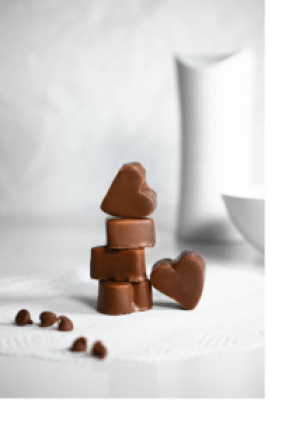 Love, like chocolate, is a connecting, encapsulating force. It is a medium that can soften, melt, and shapeshift to our many curves, edges and parts. Love—among family members, friends, partners —is also a stanchion, a strong and supportive structure that can solidify, and strengthen bonds between us, cohere the diverse members of our world that might otherwise roll or crumble apart.
Love, like chocolate, is a connecting, encapsulating force. It is a medium that can soften, melt, and shapeshift to our many curves, edges and parts. Love—among family members, friends, partners —is also a stanchion, a strong and supportive structure that can solidify, and strengthen bonds between us, cohere the diverse members of our world that might otherwise roll or crumble apart.
Love, like chocolate, is a gift we can give to ourselves and others; to be enjoyed interpersonally and intrapersonally. I’m talking about SELF-LOVE, The Body Positive’s second core Competency, and Valentine’s Day’s quieter invitation, tucked behind/inside the louder commercial messages of romance.
When we talk about self-love, we refer to (core) self energy—the calm, compassionate, connected space inside us that can be blocked at times by trauma, stress, and big or small burdens, but that always exists, and from where guidance, wisdom, and intuition emanate.Thich Nhat Hanh defines Self love as, “Loving kindness, compassion, joy and freedom.” Self-love is less an object or part we contain, than a space that we truly are, full of patience, wisdom, compassion, curiosity. Of course, self-love can be eclipsed at times by other parts (fear, worry, anger, sorrow), just as the moon or sun’s light can be eclipsed by another planet or rain cloud, or how chocolate can sometimes be lost to competing flavors in a sundae.
In the Be Body Positive Fundamentals Home Study Course Connie reminds us, “You’re not gonna love yourself all the time. Part of harnessing and practicing self love is knowing that this is a journey of trial and error and progress. Of making mistakes and being imperfect, including imperfection on your self-love cultivation.”
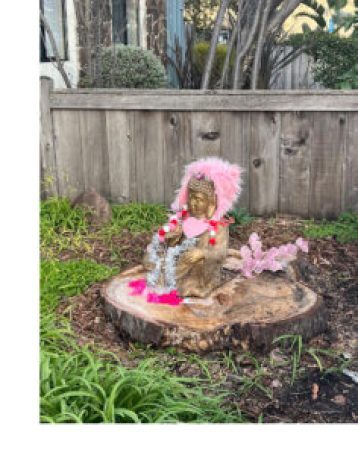 Yet, on this imperfect journey, the force of self-love never disappears; and when you do access it, it need not be trained to do its job. Whereas many traditions teach us that we have to build up the muscle of compassion and love, The Body Positive Model (and the Internal Family Systems model) believes that self-love exists in you at all times. It may be trapped behind a wall of robust coping mechanisms, critical voices (doing their best to keep you safe in the way they have learned), but self-love is always beyond the wall, alive, well, waiting, ready. In his latest book, No Bad Parts, Richard Schwartz writes, “the Self is already buff with compassion. It merely needs to be released, not strengthened.” You don’t need to take your self-love to the gym to learn the practice of sself-love this Valentine’s Day, or any day. All you need to do is learn to trust it.
Yet, on this imperfect journey, the force of self-love never disappears; and when you do access it, it need not be trained to do its job. Whereas many traditions teach us that we have to build up the muscle of compassion and love, The Body Positive Model (and the Internal Family Systems model) believes that self-love exists in you at all times. It may be trapped behind a wall of robust coping mechanisms, critical voices (doing their best to keep you safe in the way they have learned), but self-love is always beyond the wall, alive, well, waiting, ready. In his latest book, No Bad Parts, Richard Schwartz writes, “the Self is already buff with compassion. It merely needs to be released, not strengthened.” You don’t need to take your self-love to the gym to learn the practice of sself-love this Valentine’s Day, or any day. All you need to do is learn to trust it.
Of course, there are things you can do to help clear the path for self-love. Rituals like meditation, breathwork, and embodied movement (e.g., yoga, walking meditations, etc.) can be wonderful tools to help your internal system learn to trust and surrender to love. We have linked a self-love meditation at the end of this blog to help you invite self-love and self-compassion into your body today.
Please know that opening yourself up to self-love in this meditation doesn’t mean pushing away the feelings and thoughts that are not love (e.g., fear, sadness, depression, worry, anxiety, fear, anger). A self-love practice simply invites you to ask these parts to allow you some breathing space, to access the loving, compassionate self energy that already surrounds them, like the cytoplasm surrounding a cell’s contents, or the creamy chocolate surrounding and holding the almonds in my favorite treat.
Self-love is not selfish. By helping yourself open up to and cultivate self-love inside yourself, you are not escaping but rather actively partaking in the collective project of interhuman connection and healing.Elizabeth Scott claims, “Being able to be kind to ourselves is the resource that makes it possible to be kind to others.” Outwardly focused love and self-love are parallel structures, like the stacks of a Russian doll. Interpersonal love nourishes and holds our community together, and self-love supports and nourishes the individuals that form that community. More, these macro and micro (other/self) layers reflect and shape each other. When I bake, I taste my goods—I enjoy them first. Receiving and soaking up self-love is how we learn to be stronger, more attuned love-givers. As within, so without, the adage goes. More comprehensively How we treat parts in ourselves, I’ve noticed, is how we approach them in the world. (Richard Schwartz) When we hold ourselves with love, we can extend this gift to others.
On those chocolate-fueled study nights, I would instruct my friends, peering wide-eyed into the box: If you don’t like your first bite, put it back! My mother’s intuitive eating mantras from my high chair days spilled forth. The idea of someone forcing a chocolate out of politeness physically hurts me in the way that seeing a dog get yanked by its collar across a street hurts.
The Body Positive offers the following resources to you today with a similar generosity and non-attachment. Taste it, try it. If you like it, seize it, it is yours. If you don’t, simply put it back. Trust the taste buds of your intuition. This discernment, itself, is a form of self-love.
I suggest you read the whole of Mary Oliver’s “To Begin With, The Sweet Grass” But I will leave you with her last lines:
And what do I risk to tell you this, which is all I know?
Love yourself. Then forget it. Then, love the world.
Resources:
A free meditation to help you cultivate — in your body.A poem by Mary Oliver, “To Begin With, The Sweet Grass”A link to a personal essay by Melissa Febos,“The Wild, Sublime Body.”A link to the Be Body Positive Fundamentals Home Study CourseA link to a synopsis & excerpt of Richard Schwartz’s latest book, No Bad Parts
Blog Home
The post Will You Be Your Valentine? Gifts for Cultivating Self-Love appeared first on The Body Positive.
July 31, 2021
Now… Now… and Now…
posted by Connie Sobczak / July 31, 2021

“It’s human nature to want to bind ourselves to the parts of life we hold dear whether those parts are actual people, events, items, or dreams. We want to fasten them to us so they’re safe and near us forever. But this type of binding frays and tears until, even when we fight the awareness, we’re forced to see how illusory the reliance on permanence is. What we have, in all its glory, to hug and hold, to caress and learn, to feel and grow, is simply right here and right now.”
—Michele Harper, MD The Beauty In The Breaking It is life’s moments I want to talk about today.I’ve been reminded recently how important it is to spend as much time in the Now moment as I can. My 93-year-old mama has been living with us for the past two and a half years. She’s strong, healthy, capable of caring for herself, and a joy to be around. Over the past few months, however, her memory has changed dramatically.
A few weeks ago, we had a necessary discussion due to an incident that made it clear her memory was getting worse. As we sat at an outdoor café sipping our café mochas (a favorite treat of hers), we cried together, and talked honestly about what was happening and what it meant for both of us. I assured her that I was one hundred percent willing and happy to be her memory for her. And I validated how hard it must be for her to lose control over her brain and body.
Side note: My mom declared only recently that she is just now starting to feel like an old woman! May we all be so lucky to get to 93 and only then start feeling old!
Just a few days after our talk, she told me she had fully accepted what was happening with her brain. She said she was done feeling angry with herself for what she can’t control. She completely and truly let go, and went back to being her joyful and very present self.
One night last week while cleaning up after dinner, we listened to a voicemail she had received from someone in her life whom she can no longer remember. I thought she’d be upset, but she was completely fine about it.
She said, “I live so much in the moment now that I’m okay not remembering people. I’m sure I’ll remember her if I see her face, and I’ll probably forget her as soon as she walks out the door. Isn’t being in the now moment what we’ve all been striving to do anyway? I’m there!”
She said, “I live so much in the moment now that I’m okay not remembering people. I’m sure I’ll remember her if I see her face, and I’ll probably forget her as soon as she walks out the door. Isn’t being in the now moment what we’ve all ben striving to do anyway? I’m there!”What a wakeup call for me! I have been struggling with her memory loss, but she’s able to fully accept it. The incident that happened had me flying off into the future, wondering what will happen when… if… all of the things I worry about in terms of caring for her that are future-based. In these “what if” moments, I’m usually able to recognize my fear taking over and reel myself back in to the present, and trust that I’ll be able to handle things if I take them one at a time. But, hearing my mom acknowledge out loud that she’s mastered the art of living fully in the present, was a sweet reminder of what’s important.
It’s such a simple truth—living in the now moment is all we have. Yet, it is so hard to accomplish.
It is my goal to spend as many moments as I can being right here, right now. And to forgive myself when I forget.I leave you with a tool for staying present that my mom taught me many years ago: When something is happening in your life that feels good, say out loud, “This is a good moment!” Let these words soak into every one of your trillions and trillions of cells. As the good moments of your life accumulate, hopefully they will become the memories you hold onto when you are 93 and just beginning to feel old!
For more help with turning towards yourself with kindness, check out my TEDx talk—Embracing Your Critical Voice: The Gateway to Self-Love. For a taste of what The Body Positive offers through our Fundamentals course, download this free self-love meditation.
I wish you love and many beautiful moments.
Connie
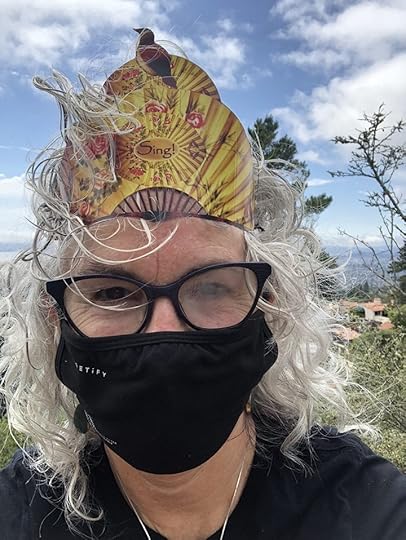 Connie SobczakConnie Sobczak, author of Embody and Co-Founder of The Body Positive, loves to watch the light and power that emerge when people recognize and embrace their magnificent, authentic selves.Her favorite pleasure activities include eating delicious meals, and rock climbing and running as fast as she can down mountains with her daughter Carmen. She gets true rest by getting lost in a good book. She is currently in love with The Plague of Doves, by Louise Erdrich, and The Lowland, by Jhumpa Lahiri.
Connie SobczakConnie Sobczak, author of Embody and Co-Founder of The Body Positive, loves to watch the light and power that emerge when people recognize and embrace their magnificent, authentic selves.Her favorite pleasure activities include eating delicious meals, and rock climbing and running as fast as she can down mountains with her daughter Carmen. She gets true rest by getting lost in a good book. She is currently in love with The Plague of Doves, by Louise Erdrich, and The Lowland, by Jhumpa Lahiri. 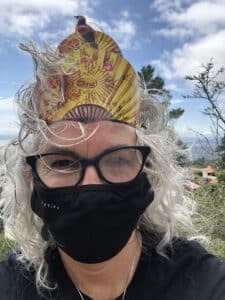 Connie Sobczak
Connie SobczakConnie Sobczak, author of Embody and Co-Founder of The Body Positive, loves to watch the light and power that emerge when people recognize and embrace their magnificent, authentic selves.Her favorite pleasure activities include eating delicious meals, and rock climbing and running as fast as she can down mountains with her daughter Carmen. She gets true rest by getting lost in a good book. She is currently in love with The Plague of Doves, by Louise Erdrich, and The Lowland, by Jhumpa Lahiri.
Blog HomeThe post Now… Now… and Now… appeared first on The Body Positive.
May 24, 2021
The Personal and the Political: Body Neutrality and Body Positivity
posted by Leah Berkenwald / May 24, 2021

The views expressed in this op-ed are those of the author and do not necessarily reflect the views of Brandeis University or The Body Positive.
Something is happening. More and more, I am hearing people suggest that we reject “body positivity” in favor of “body neutrality.” They imply that “body neutrality” is somehow more socially just – more inclusive – than “body positivity.”
The work I have done in the field of health promotion and specifically body positive education has trained me to be mindful – to pay attention to my body and how I feel in it. Each time I hear someone say “body neutrality,” I experience it in my body as a twinge. A contraction. A feeling of unsettlement, defensiveness, and a little bit of hurt.
So let’s examine that. My graduate work in health communication focused on how we talk about body image. I am a licensed Be Body Positive facilitator. I currently run a program for undergraduate and graduate students with “body positive” in its name. To be sure, I hold some personal investment in the nomenclature.
facilitator. I currently run a program for undergraduate and graduate students with “body positive” in its name. To be sure, I hold some personal investment in the nomenclature.
But I am well familiar with that initial kick of defensiveness in my belly when I am told that something I’ve always said is no longer the most equitable or just way to say it. I acquiesce and begin using the new, clunky-sounding terminology. After a while, it feels less clunky. The defensive feeling subsides and the new language becomes normal. Each time I practice this it happens more quickly and with less resistance.
My reaction to “body neutrality” is different. Let me explain.

Pride, like positivity, suggests a celebration, a rising up, a coming out. It means taking something back, owning it, and to some extent throwing it back in your haters’ faces. Make no mistake, people hate body positive activists. They especially hate fat people who are not trying to lose weight, or have the audacity to be happy with their bodies.
When most people hear “body positivity,” they think about their own body image. We think about our personal struggles, suffering, and shame. The shame runs deep because we not only feel shame for our bodies, but also shame about feeling shame for our bodies. Many of us have also experienced violence in our bodies, or have bodies that do not align with our gender identity. Positivity may feel like too much to expect. Disconnection from our bodies can sometimes be a part of the healing process.
My intention is not to shame anyone for feeling more comfortable using the term “body neutrality.” But I do challenge you to examine those feelings. I challenge you to observe your reactions, without judgement, as you continue reading.
Positivity feels uncomfortable when we don’t feel positive, and it’s understandable to want an alternative that doesn’t force us to confront that discomfort. Body neutrality can feel like a more attainable goal than positivity. “Body neutrality” is also a term that makes it sound acceptable to not like your body very much. It says, “it’s okay to not love your body; you, your shame, and your trauma are welcome here.”
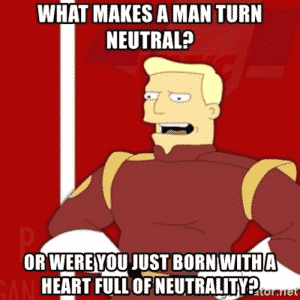
While calling ourselves and our communities “body neutral” may seem more inclusive (all are welcome, even those who hate their bodies), it offers no hope for anything better. It lets you know that no one here will encourage you to work on healing your relationship with your body. It suggests that the best we can do is hide our body image under the bed when we have company. It expresses our resignation to the idea that loving our bodies is impossible.
Loving our bodies is NOT impossible.
Loving your body isn’t easy, but it is possible. It doesn’t happen all at once. It grows slowly from discomfort to tolerance, from tolerance to acceptance, and from acceptance to love. And then we see a photo of ourselves we don’t like, and it’s back to discomfort, tolerance, acceptance and so the cycle repeats. But each time we work through the cycle, we build our resilience. We begin to recover more quickly with less effort. Body positivity is not a trophy you can win, put on a shelf, and never think about again.
But it is possible to improve your relationship with your body over time, with support, practice, and community.“Body positivity” may sound intimidating or exclusive, but it shouldn’t. The problem lies in a fundamental misunderstanding: body positivity isn’t about our individual struggles with body image, it’s about a cultural paradigm shift.
Just like body mass index (BMI) was not designed to accurately measure an individual person’s health, the term “body positivity” was not meant to capture our personal and complex individual relationships with our bodies. Rather, the term refers to a cultural and political movement to protect our fundamental human right to accept, honor, celebrate, even (gasp) love our bodies in their myriad, diverse glory. It’s about justice for all bodies to be treated equally and fairly, regardless of shape or size or appearance.
Naming a space “body positive” means you are creating a supportive environment for individuals to explore or work on their body image, as well as creating a space where it’s actually okay to say positive things about our bodies out loud. Promoting body positivity means creating communities that make it easier for people to feel good about their bodies, and dismantling systems of oppression in order to reduce the devastating, widespread, and completely unnecessary suffering created by sizeism in our society.
Perhaps we have failed to make it clear that body positivity is for everyone, no matter where you are in your personal body image journey. You don’t actually need to love your body in order to support body positivity. You simply need to believe in the possibility of a better life for millions of people. Body positivity — not neutrality — is what will lift us up and move us forward.
To be sure, the body positive movement must hold itself to a high standard. Too often, it has succumbed to “good vibes only” pandering and toxic positivity, which looks good on Instagram but leaves no room for the nuance and real suffering present in the struggle for embodiment. A body positivity movement without space for pain and healing is not inclusive.
Body positivity cannot be apolitical. Without the fight for liberation from racism, sizeism, and other systems of oppression, body positivity is just lip service.I look around and see progress. I see more diverse bodies in every-day advertising. I see plus size clothes being sold by more mainstream brands. I see big companies publicly aligning themselves with body positivity in an occasionally ground-breaking way. I see Gen Z growing up with more diverse bodies represented on TV shows and social media.
In our Be Body Positive groups, we talk about creating a “brave space” rather than a safe space. I know that it can feel uncomfortable to enter a body positive space or talk about body positivity when you don’t feel positive about your own body. But I encourage you to be brave, embrace the discomfort, and push forward to liberate yourself and generations to come from body shame.
groups, we talk about creating a “brave space” rather than a safe space. I know that it can feel uncomfortable to enter a body positive space or talk about body positivity when you don’t feel positive about your own body. But I encourage you to be brave, embrace the discomfort, and push forward to liberate yourself and generations to come from body shame.
A body positive society may still be aspirational, but please do not abandon the objective. We have come too far to surrender the promise of joy, compassion, and pride for our bodies in favor of something subdued, something yielding, something “neutral.”
Leah Berkenwald
Leah Berkenwald is the Director of Health Promotion and Wellness Initiatives at Brandeis University. She is a licensed Be Body Positive Facilitator and also serves on the Board of Trustees of the New England College Health Association.
Facilitator and also serves on the Board of Trustees of the New England College Health Association.
The post The Personal and the Political: Body Neutrality and Body Positivity appeared first on The Body Positive.
May 14, 2021
Fat Liberation, Diet Culture, and Reimagining Our World
posted by Dariana Guerrero / May 14, 2021

Trigger Warnings: diet culture, shaming, fatphobia, descriptions of dieting, and disordered eating
In 1973 a group of radical fat therapists created The Fat Underground, a collective of fat folks radicalizing the space of therapy to focus on eating disorders, unpack fat phobia, and interrogate the health care industrial complex that so often marginalizes fat people for just being fat. Sara Golda Bracha Fishman co-founder of The Fat Underground implicates the medical field and confronts them as perpetrators of fat phobia, stating:
We [the fat underground] accused them-doctors, psychologists, and public health officials-of concealing and distorting the facts about fat that were contained in their own professional research journals. In doing so, they betrayed us and played into the hands of the multibillion dollar weight-loss industry, which exploits fear of fat and contempt toward fat people as a means to make more money.
Fishman calls for transparency in the medical field, describing that the health care industrial complex has “distorted facts” about fat in order to capitalize on the vulnerable, marginalized fat body through the weight-loss industry, ultimately “exploiting” fat bodies and breeding contempt and “fear.” Fat bodies become a form of capital and buying into diet culture forces fat folk into a harmful cycle of exploitation that just results in “more money” being made by the diet industrial complex. Our approach to weight-loss and dieting has not changed much since 1973, but perhaps the most significant change is that fat folk are fighting back.
The Fat Underground penned the first (to my knowledge) Fat Liberation Manifesto in 1979 demanding respect for fat people. Alluding to Karl Marx’s The Communinst Manifesto, The Fat Underground write, “WE refuse to be subjugated to the interests of our enemies. We fully intend to reclaim power over our bodies and our lives. We commit ourselves to pursue these goals together” (3). Diet culture is the “enemy” The Fat Underground chooses to admonish; and “reclaiming” our bodies–fat, skinny, tall, short is how we fight back against oppression because our “power” lies in embracing, defending, and honoring our identities. Most importantly, we have to “commit” to these goals “together.”
Solidarity among fat folk and other marginalized groups of people is the only way we, as a society, can lift ourselves out of the oppressive, corporate systems looking to do our bodies harm.Fat writers and activists in our time are not settling for the falsehood of the BMI scale, are not settling for Oprah’s grand collaboration with Weight Watchers (now indistinctly rebranded as WW), and fat folk certainly are not settling for cowering silence. Instead, activists turn to the pen and keyboard to write not just their pain, but to expose the ideological forces that have left them marginalized and demonized.
Virgie Tovar, one of the nation’s leading experts and lecturers on fat discrimination and body image penned, You Have the Right to Remain Fat a book chronicling Tovar’s experiences with fatphobia, diet culture, and systemic oppression. In this text, she begins to define terminology pertinent to fat studies, like fatphobia, arguing:
Fatphobia is a form of bigotry that positions fat people as inferior and as objects of hatred and derision. Fatphobia targets and scapegoats fat people, but it ends up harming all people […] So, Fatphobia uses the treatment of fat people as a means of controlling the body size of all people […] people learn to fear becoming fat. They are afraid of discrimination and hatred […] We learn these things through an ongoing cultural education. (Tovar 17-18)
Tovar’s definition of fatphobia significantly characterizes it as a problem for all people. The scapegoating of fat people as perpetrators of their own problems mischaracterizes the harm diet culture has on every single person existing within a body. Tovar’s words touch upon the learning of bias–bias is something that we are taught. The subliminal messages we receive about acceptable bodies and deviant bodies start young–as children, we are told who holds most value due to representations on social media, in literature, on TV, and in film. These messages perpetuate diet culture because it is rare to see fat bodies, queer bodies, black and brown bodies portrayed at all, let alone in positive lights. For me, reading Tovar’s manifesto added to the positive representation of fat Latinx women, yet even she struggled with the demands and pressures of body image expectations.
Virgie Tovar felt the sting of diet culture in her youth, learning toxic messages because of the cultural education she, me, we, us receive as she states:
Yes, I dieted because I believed that it was only through weight loss that I could deserve to travel, wear cute clothes, and go on lots of dates with people I was hot for. But more than that, I wanted the stuff that those things represented: happiness, love, joy, and most importantly freedom. I was trying to starve my way into freedom. I was taught to believe that weight loss was the key to all of my heart’s greatest desires, but the truth is that it wasn’t. Because you can’t find self-love by walking a path paved by self-hatred (Tovar 110).
Tovar’s words speak to the narrative we have been taught in our society–being thin is to be loved, happy, joyous, and free, and we can only achieve these things once we are thin.
Instead, she challenges us to find love within ourselves and to chase freedom from oppression at all costs.I do find optimism in Tovar’s words because while we can learn hatred and bigotry, we can also UNLEARN it. First, we need to understand where these messages come from. More often than not, oppressive frameworks we’ve learned result from capitalist, white supremacist, and patriarchal ideas that we have inherited from people before us. When we understand the oppression axis we exist in, we can then unlearn it. We can counter those oppressive ideologies by learning more about ourselves and the world concerning theories and frameworks that exist to dismantle those forces. Take critical race theory, intersectional feminist theory, queer theory, and Marxism as antithetical lenses to the oppressive ones we’ve learned. All we need to do is switch out our proverbial lenses and grab a new pair of glasses. We can entirely reinvent and re-see the world.
By daring to dream of a future without oppression, we begin to imagine systems where our bodies can live freely, dance, play and EAT without the associated codes we’ve inherited from cultures and people before us. This work of reinvention and re-visioning does not solely apply to fat liberation and diet culture because these two movements and cultures do not exist in a vacuum. Instead, our intersectional identities (race, class, gender, sexuality, ability, etc.) work in tandem to make us who we are–re-learning, re-inventing, re-visualizing the world takes the whole body, and it takes every BODY. Imagining a future void of the oppressive systems is hard, but as Tovar writes, “What if I told you that you have the right to that world?” (117). We all have a right to feel safe, valid, happy, and loved in the bodies we were born into. It is our right. It is our right. And we’re gonna fight to make it happen. The collective fight we imagine will take all of us living in bodies to dismantle these oppressive systems together.
Bracha Fishman, Sarah Golda, “Life in the Fat Underground.” Radiance Magazine Online, http://www.radiancemagazine.com/issue...
Bracha Fishman, Sarah Golda, “Life in the Fat Underground.” Radiance Magazine Online, http://www.radiancemagazine.com/issue...
Freespirit, Judy, and Aldebaran. “Fat Liberation Manifesto.” Off Our Backs, vol. 9, no. 4, 1979, pp. 18–18. JSTOR, www.jstor.org/stable/25773035. Accessed 11 Dec. 2020.
 Dariana Guerrero
Dariana Guerrero
Dariana Guerrero began her journey as an artist, activist, and educator in her hometown of Lawrence, Massachusetts. After graduating from Smith College in 2017, she transitioned to teaching high school English and committed herself to creating equitable and safe spaces for underrepresented students in predominately white institutions. Her passion for fat liberation, youth education, and spoken word poetry aided her in the start of body-positive youth programming, hoping to educate and aid adolescents in their own body journeys. Outside of teaching, Dariana is a scholar and hopes to pursue her Ph.D. in English to study the relationship between fat bodies, labor, and social movements. Her work has been featured in a wide variety of publications including, Caustic Frolic Literary Journal, Exposed Brick Literary Magazine, Glass Poetry Journal, Voices and Visions, and Women: A Cultural Review to name a few. You can check out more of Dariana’s work here https://linktr.ee/Darideee.
Blog HomeThe post Fat Liberation, Diet Culture, and Reimagining Our World appeared first on The Body Positive.
February 17, 2021
A Message About Planting a Seed
posted by Sarah Kessner / February 17, 2021
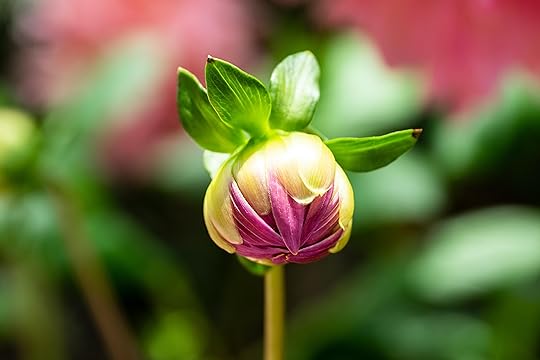
In the spirit of self-compassion, I wanted to speak a little to planting a seed, and the importance of reminding myself of this when I’m feeling stuck.
I learned about The Body Positive upon a random internet search. I don’t really remember what I was looking for, except that I wanted relief from my suffering around an eating disorder I felt like I couldn’t get a handle on. And I found a blog post written by Connie Sobczak around honoring our changing bodies and appetites during the colder seasons.
And I felt something shift in my body – this was something that was very different from the traditional messages I had received throughout my treatment for an eating disorder.
The latter messages were firm: that recovery from an eating disorder meant “weight restoration” and staying within a “normal” BMI, regardless of my natural body weight range. I loved Connie’s radical message around honoring our changing bodies, wherever they went, and sent the blog post to my dearest friends, including my two sisters who also had disordered eating histories. At that point, I began reading everything I could get my hands on about The Body Positive, Health at Every Size (HAES), and Intuitive Eating.
And something continued to shift in me. At the time I was working at a group home for children and teens and had been slowly these concepts to my residents. Shortly after, I was inspired to go back to school for nutrition to become a dietitian using the new health and nutrition paradigms I was learning about. This was 10 years ago. I say this because even though I had this shift and felt inspired at that time, I didn’t become a HAES-informed eating disorder Registered Dietitian until the end of 2019 and a Be Positive Facilitator until 2020.
Throughout my 20s and early 30s, I continued to struggle with an eating disorder, despite years of traditional treatment. When I found The Body Positive, I attended several day-long workshops and brought one of my sisters who felt likewise transformed (she also later went on to work for Connie and eventually became a Body Positive midwife). I even conducted my graduate research on the Be Body Positive model and nutrition graduate students.
The reason all of this is important to talk about now is for those who feel stuck in the traditional recovery model or disheartened by the larger system of inequities and injustices you may be working within that makes it feel impossible to heal yourself or others.
Maybe you are working among folx with old-school beliefs and you feel met with constant resistance when trying advocate for change in your department. I know all too well the experiences of silencing when I am fighting against a larger system of oppression and power.
The thing is, I learned about the Body Positive in 2010 but didn’t really reach a place of full, intuitive living until probably 2020. This year. And this is significant because although I had an eating disorder and continued to struggle for many years, my recovery from a relapse was always much less painful than before because I was able to fall back on what I had learned from The Body Positive and their 5 Competencies: Reclaim Health (which was constantly evolving), Practice Intuitive Self-Care (which was unique to only me and no one on social media could tell me what it looked like), Cultivate Self-Love (which didn’t happen overnight, but did eventually happen), Declare My Own Authentic Beauty (which looked very different than what I had been fed by diet culture), and Build Community (which meant surrounding myself with other Body Positive folx, leading groups, and educating others when it felt safe to do so).
I always had these competencies in my back pocket, really as my basic foundation for living.And these are competencies, not rules. I practiced them, I did not “perfect” them. I was healing from my perfectionism which had only served to put a blanket on what I was really struggling with – my desire around feeling loved. Navigating my relapses was hard, but I kept coming back to my home, my body, my unique body, and the words of Connie and Elizabeth Scott around fluidity – that life and our bodies are not static. I say this now because I know it can sometimes feel like we are fighting against a system that is greater than ourselves. And we are. But I want you to remember the power of planting a seed. If that seed wasn’t planted back in 2010, I am not sure I would be recovered today – or a HAES dietitian and a Be Body Positive Licensed Facilitator now. Yes, sometimes, the system feels too great. And I feel disheartened or hopeless. But I remember how I felt when I read that first blog post.
Today I work as a dietitian at a forensic psychiatric hospital and sometimes the injustices that play a role in why these patients are there can feel too heavy to bear. And sometimes I feel like I am pushing up against a cement wall that is planted firmly within these kinds of institutions. But I am reminded of the feedback I received from a patient after my internship. I had the opportunity to lead a “wellness” group for patients around “healthy living” and I chose to use the Body Stories activity. At the very end of the group series, they asked the patients what they liked most about the groups and what was most meaningful to them. And one patient shared that creating his Body Story in the group I lead was the most meaningful to him. This was very powerful to me as this patient used to be the most violent patient in the entire hospital of over 1,200 beds – and he had the opportunity to look at his body story, reflect, and imagine a more peaceful relationship with his body in his future. He was able to come back to his home, to his birthright and to at least maybe, feel embodied, even for just a moment, under the impossible circumstances of his life, serving time in a maximum-security psychiatric hospital. Another patient had shared with the group that he envisioned a future in which he could have unconditional acceptance of his body. Pretty incredible, huh?
And so I remind myself of this now – the importance of planting a seed and the messages I have received throughout the years that show that I have made an impact. I remind myself of this after a challenging session with a client who doesn’t feel seen, or a tense conversation with an angry parent who denies their child’s eating disorder. After an emotional group and the heaviness I feel knowing my clients have to go back into the world of injustice, racism, and fat phobia. After I feel silenced by other health professionals who can’t seem to understand why shaming patients for their eating behaviors and their weight is harmful. After I have a client discontinue work with me because she wants to give dieting another shot. And after all the times I start to feel myself collapsing into hopelessness, I remind myself of where I was all those years ago.
The seed was planted. And the seed started to sprout, and grow, and flourish, but not without a little water, light, and tenderness. Which is what I was able to give it when I was resourced. The Body Positive had provided me the foundation and that little bit of recovery and hope I needed to persevere and navigate this world when it felt against me.
I want to remind that to all of you – if you’re reading this now, the seed has been planted. And sometimes that’s all we can do. We need that seed to create a garden or a forest-style kind of revolution. All it takes is one seed.
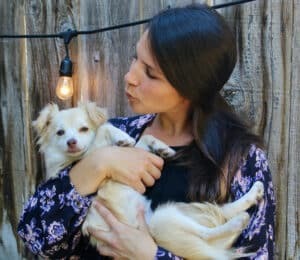 Sarah Kessner, MS, RDN
Sarah Kessner, MS, RDN
Sarah Kessner is an Anti-Diet, Fat-Positive registered dietitian and licensed Be Body Positive Facilitator living on the Central Coast. She has extensive experience working in the mental health field, primarily working with children, teens, and college students. The Body Positive helped inform her personal and professional philosophy around helping folx reconnect with the innate wisdom of their uniquely beautiful bodies. She is on a mission to use her privilege and her power for good to help diversify dietetics and to help dismantle racism, just one of the forms of oppression that has informed diet culture. In her spare time, she loves to be in nature, read for pleasure, practice Spanish, and prepare delicious food, specifically Jewish cuisine staples like challah bread and latkes or anything s’mores-related. She is family-focused, obsessed with her soul sisters, and loves to spend time with her S.O. and their wolf-husky hybrid and long-haired chihuahua.
The post A Message About Planting a Seed appeared first on The Body Positive.
December 16, 2020
‘Tis the Season To Be Squishy!
posted by Connie Sobczak / December 17, 2020

As another winter sets in here in the Northern Hemisphere, I’ve heard numerous comments from people who are feeling anxious and uncomfortable in their bodies; achy, tired, sluggish, and physically low are common grievances. They express guilt about their cravings for foods high in sugar and fat. They feel badly about getting away from their usual eating and exercise routines.
As my mind slowly came to consciousness on this cold, dark morning, I discovered the perfect word for how I feel as winter takes hold: squishy.
squish • y, adj.
soft
overly sentimental
weak
When I was younger, I thought something was seriously wrong with me because my relationship with my body and my mental state changed so drastically as the darkness set in. I felt out of touch with my physical self, and believed I’d never be happy again. I felt squishy!
What I’ve learned in my sixty years of cycling through the seasons is that I am no different from other animals on the planet, and, as such, my desire to slow down and hibernate makes complete sense.
It is natural to stay indoors to keep the cold at bay (if we are so privileged), to get more rest, and to eat foods that give our bodies the cushioning they need to stay warm (again, if we have this privilege). No matter our natural body size—fat, thin, or somewhere in between—in winter we are meant to slow down, rest, and honor our bodies’ winter needs in order to survive.
I’m guessing you may experience what I do at this time of year: the near impossibility of honoring our winter needs in this fast-paced, never-slow-down human world. I feel out of sorts and grouchy when too much is demanded of me in winter. As the days get darker and the temperature drops (though I really can’t complain too much about the temperature living in California!), I find I’m not much interested in rigorous exercise, and feel content eating foods with more fat and sugar. I bake my favorite cookies regularly, and eating more butter, oil, and cheese feels like the right thing to do. Yes, I still eat my veggies and take pleasure in cooking delicious, nourishing meals. And most days I go out for a walk or bounce on my mini trampoline while watching Netflix. But I also honor the days when I don’t have the energy to move, and do so without guilt. I allow myself to naturally put on winter weight without feeling anxious. I do my work, though less efficiently, and accept that “doing my best” from late November through February is drastically different from the months when I’m filled with light and energy. I try to honor my obligations and promises to other people, but do so with great effort.
If I had my way, I would have zero obligations in winter so I could curl up on my couch, wrapped in my favorite blanket with a warm beverage and delicious snacks at my fingertips, and read—all day, every day—until the end of February. I would honor that I really am a bear in human clothing and desperately need my hibernation time!
I love watching the squirrels outside my kitchen office window. In the fall, they scurry around the yard, stashing food everywhere imaginable for the coming winter. Their energy is focused on the task of survival. As the cold and dark days arrive, the squirrels are beautifully fat with thick fur and shiny coats. They don’t play with one another as they do in spring and summer. If the sun is out, they sprawl out on the fence or over a tree branch, legs hanging freely, with their sweet little faces resting on their front paws! Ahh…
Let’s be like the squirrels, my human friends. Since we still need to semi-function in the cold winter months and can’t go into full hibernation mode as bears do, let’s at least recognize that we physiologically function like other animals on this planet. Let’s allow ourselves to winterize. Let’s be okay with the softening of body and mind so we can focus our gaze internally and process the lessons of the year. Let’s be kind to ourselves and enjoy the delicious foods and beverages of the holidays. Note: if you feel guilt for eating holiday treats or shame for indulging in holiday spirits more than usual, you will end up consuming more of what you think you should limit! Deprivation will lead to bingeing!*
I choose to honor that my body asks for a different type of balance in the winter—one where moving slowly is needed as much as energetic movement, and my nutritional needs include fat and sugar in higher amounts than at other times of the year.
That’s me. What does winter balance mean to you?
In their book Healthy Pleasures, Dr. David Sobel and Dr. Robert Ornstein write about how our brilliant (my word) bodies crave certain foods to stimulate production of necessary neurotransmitters to combat stress or to ensure our intake of important nutrients. To quote from their book, “It may be instinctive, then, when we eat certain foods to bolster production of these neurotransmitters to help us get through stressful situations or to satisfy a hunger for a specific nutrient. So, the next time you ‘feel like a steak’ or ‘need a cookie’ it could be your brain—and not your stomach—talking.” Out of the mouths of doctors! **
As we all know, the holidays can be stressful for many reasons—and more so this year than usual with the COVID pandemic adding additional anxiety. Let’s not make life harder by criticizing our bodies and beating ourselves up for indulging in the flavors and sensations of the season. Let’s remember that spring always does follow winter, and our desire to move more and eat a lighter fare will naturally return, especially if we don’t make a New Year’s resolution to lose weight on a restrictive diet! Our moods will lift as the light and warmth return to our part of the planet, and our ability to function in all parts of our lives will improve as our energy returns.
‘Tis the season to be squishy, my friends—enjoy!
With love,
Connie
 Connie Sobczak
Connie SobczakConnie is the author of Embody and Founder of The Body Positive. She loves to watch the light that emerges when people embrace their magnificent, authentic selves. Her favorite pleasure activities include eating delicious meals, free climbing granite peaks, and running as fast as she can down mountains with her daughter Carmen. She finds true rest by getting absorbed in a good book. Her current recommendations are Gloryland, by Shelton Johnson, When They Call You a Terrorist, by Patrisse Kahn-Cullers, The Water Dancer, by Ta-Nehisi Coates, and A Woman of No Importance, by Sonia Purnell

Connie Sobczak
Connie Sobczak, author of Embody and Co-Founder of The Body Positive, loves to watch the light and power that emerge when people recognize and embrace their magnificent, authentic selves.Her favorite pleasure activities include eating delicious meals, and rock climbing and running as fast as she can down mountains with her daughter Carmen. She gets true rest by getting lost in a good book. She is currently in love with The Plague of Doves, by Louise Erdrich, and The Lowland, by Jhumpa Lahiri.
Blog Home
The post ‘Tis the Season To Be Squishy! appeared first on The Body Positive.
How Cultivating Self-Love Supports Social Justice
posted by Elizabeth Scott / December 16, 2020

The practice of turning towards our critical voice with curiosity and kindness is the foundation of social justice work. Why? If we can become aware of how our aggression towards ourselves comes from allowing our fears to motivate our actions, we can choose to kindly nourish the parts of ourselves that are afraid. This allows us the freedom to choose self-care instead of self-harm. It works the same way in larger social spheres… when we can own our own fears and learn to process them with self-awareness and love, we can free ourselves from projecting them unconsciously onto others in the form of racism, homophobia, transphobia, and other forms of discrimination.
Cultivating Self-Love is a two-part process: focusing on expanding our experience of love in our own bodies and then turning towards our fearful parts with kindness.
We can practice drawing our fears close, like a frightened child, pressing them to our chest and allowing our solid loving heart to transform them into confidence, ease, and calm. This is a warrior’s path, it takes bravery and practice but it brings great freedom and peace to transform fear into care for ourselves and each other.
I invite you to listen to my latest podcast here in which I discuss the links between white privilege and eating disorders. I talk about how I see white privilege contributing to disruptions in embodiment in my clinical practice. I encourage you to listen to it while paying attention to the ways that you have privilege. Even if you inhabit some marginalized identities it is likely that there are ways you are also privileged in this society. Perhaps you are able bodied or have U.S. citizenship or practice a dominant religion, etc.
I have found it useful to explore the impact of my privileged identities on my body experience in order to come to understand the dynamics of privilege more deeply.
I am interested in the ways I have learned to defend my privileges and validate my opportunities, and the ways that I deaden myself to the suffering of others. Recognizing the ways that participating in systems of inequality (as we all do by just living in this society) causes suffering in my life and proliferates suffering for others helps me to open up my heart and connect with others. It breaks down the isolation of privilege.
This self-awareness is what offers freedom to make change. For example, in the small ways that I talk about in the podcast, and in bigger ways, like joining in the movement for Black Lives Matter and supporting wonderful organizations like M4BLM. There is so much joy and freedom in strengthening our hearts and caring for each other.
May your heart grow stronger through all of the changes you endure. If you need support and want to discuss these ideas more deeply, please visit my website to connect. I welcome your inquiries. Visit The Body Positive Institute for additional resources to enhance your self-love practice.
Warmly,
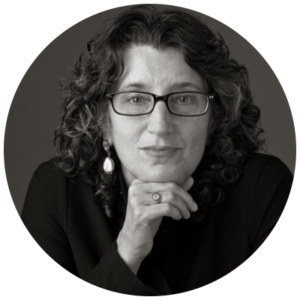 Elizabeth Scott
Elizabeth ScottElizabeth Scott LCSW, CEDS-S, is Co-Founder and Director of Training for The Body Positive. She has been practicing psychotherapy for more than two decades in Marin County, CA. She studies Vipassana Meditation, a practical, embodied approach to awakening, which she finds to be an inexhaustible resource for finding joy and purpose in life.

Elizabeth Scott
Elizabeth Scott LCSW, CEDS-S, is Co-Founder and Director of Training for The Body Positive. She has been practicing psychotherapy for more than two decades in Marin County, CA. She studies Vipassana Meditation, a practical, embodied approach to awakening, which she finds to be an inexhaustible resource for finding joy and purpose in life.
Blog Home
The post How Cultivating Self-Love Supports Social Justice appeared first on The Body Positive.
September 27, 2020
Why we talk about “embodiment” instead of “body image” at The Body Positive
posted by Elizabeth Scott / September 27, 2020
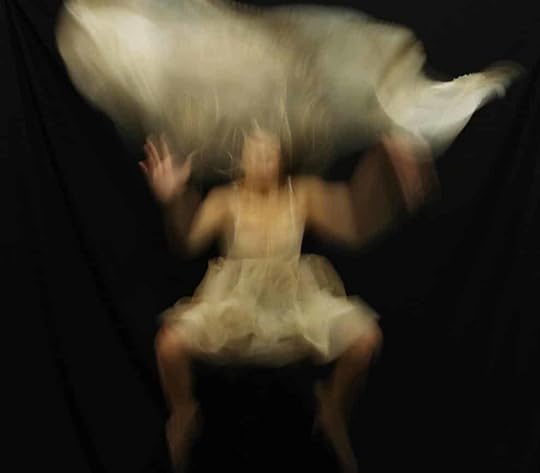
You may have noticed that at The Body Positive we talk about embodiment instead of body image. Ever since Connie’s book Embody was published in 2014, we have used embodiment because it is a powerful way to think about inhabiting our bodies as subjects—from the inside.1
Let me explain why.
The concept of embodiment is an extensively researched definition of positive embodiment offered as an alternative for the term body image in the Developmental Theory of Embodiment created by Niva Piran, PhD.2 Piran has identified many social risk factors for disrupted embodiment as well as protective social factors that promote resilience. Her model is a rich resource for treatment providers committed to ending eating disorders in our society. Her research is also very supportive of the community-based prevention work we have engaged in for the past 25 years at The Body Positive.
We talk about embodiment, because this guides us to the subjective experience of how it feels to live inside our bodies and to identify with our own unique experience. Whereas body image is fundamentally dissociative.
Body image starts by focusing on how we are seen from outside of ourselves. When we ask a client about their body image, we are already directing the individual to move outside of their body and to look back at themselves through the eyes of a critical, judging authority.
This practice of looking at ourselves from an outside perspective, and imagining an authority figure judging our beauty and our worth, is what feminists call “the male gaze.” In an interview with Toni Morrison, James Baldwin joked about “the little white man that sits on my shoulder” judging his writing, and how he learned to “flick him off” so that he could write from his own internal experience.3
When we focus on what the more powerful, higher caste people in our lives might be thinking about our bodies, our thoughts, and our creative pursuits, we are fundamentally dissociated from our power, our beauty, and our freedom.
Trusting the authority of our own body experience is the opposite of accepting authoritarianism. Listening to our own intuition, the wisdom of our bellies and our bones, is the path to freedom and to boldly living our precious lives. In the Be Body Positive Model, we call this Practicing Intuitive Self-Care. We start by cultivating the self-love we need to “flick off” the authoritarian inner critical voice.
“Love takes off the masks that we fear we cannot live without and know we cannot live within. I use the word ‘love’ here not merely in the personal sense but as a state of being, or a state of grace—not in the infantile American sense of being made happy but in the tough and universal sense of quest and daring and growth.”
―James Baldwin, The Fire Next Time
If you are interested in learning more about how to apply the Be Body Positive Model to recovery from eating and embodiment problems, or if you want to learn more about Niva Piran’s feminist theory of embodiment, I invite you to join my upcoming Big Hearted Embodiment training beginning on October 9, 2020. This is a live Zoom intensive for treatment providers, and is rich with positive resources for inhabiting our bodies with passion and joy. This is the third training I have taught, and we are creating a wonderful community of providers committed to positive embodiment and social justice. You are welcome to join us.
Learn more about the Big Hearted Embodiment training at my private practice website or by clicking on this flyer link.
I welcome your inquiries. Please email me at escottlcsw@gmail.com.
My best to you,
 Elizabeth Scott
Elizabeth ScottElizabeth Scott LCSW, CEDS-S, is Co-Founder and Director of Training for The Body Positive. She has been practicing psychotherapy for more than two decades in Marin County, CA. She studies Vipassana Meditation, a practical, embodied approach to awakening, which she finds to be an inexhaustible resource for finding joy and purpose in life.

Elizabeth Scott
Elizabeth Scott LCSW, CEDS-S, is Co-Founder and Director of Training for The Body Positive. She has been practicing psychotherapy for more than two decades in Marin County, CA. She studies Vipassana Meditation, a practical, embodied approach to awakening, which she finds to be an inexhaustible resource for finding joy and purpose in life.
Blog Home
[1] Sobczak, C. (2014). Embody: Learning to love your unique body (and quiet that critical voice!). Carlsbad, CA: Gurze Books.
[2] Piran, N. (2017). Journeys of embodiment at the intersection of body and culture: The developmental theory of embodiment. San Diego: CA, Elsevier Press
[3] Toni Morrison. (2019). The Pieces I Am. Prime Video.
The post Why we talk about “embodiment” instead of “body image” at The Body Positive appeared first on The Body Positive.



